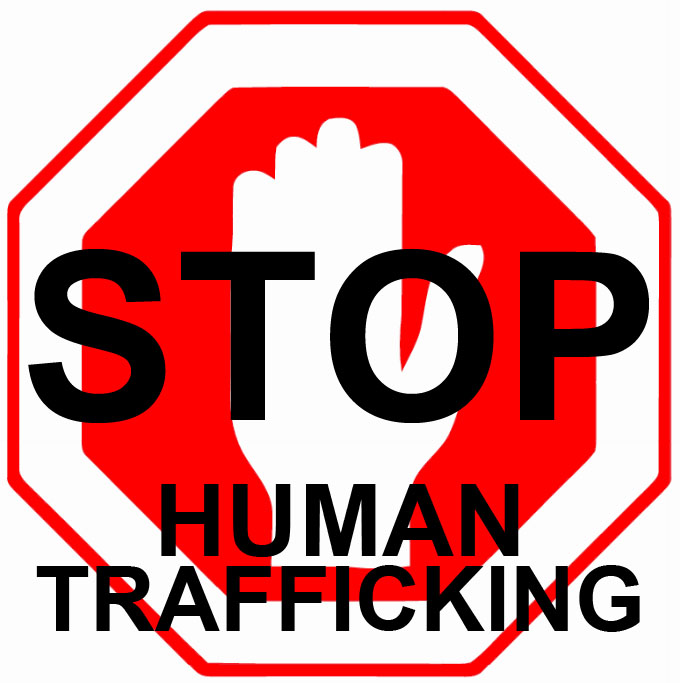Article by: J-1 correspondant Olivia Carey
A recent story on Style Weekly featured a young woman, Tanya Street, who was a New Jersey senior in high school. She had a baby whose father had taken off, and a family history of sexual abuse.
One night she went on a date with a much older man, maybe 28, and she fell for him. He took her to fun places, he listened to her story, and he charmed her, things that would romance many high school girls.
Eventually he proposed the idea of Street becoming a prostitute and helping him recruit other girls for the business. She declined, and he turned her life story on her. He took the details of her life, and he twisted them to put her down. He did not speak to her for weeks. When he finally acknowledged her again, she was ready to do anything to gain his love and his trust back.
Street became a prostitute, traveling up and down the coast in between New Jersey and Virginia. Street has been robbed, held at gun point, and beaten by her pimp.
Human trafficking is not just sex slavery like what usually comes to mind. It can be using someone as a slave for labor, doing things like cooking and cleaning.
According to the “Protocol to Prevent, Suppress and Punish Trafficking in Persons”, trafficking is the “prostitution of others or other forms of sexual exploitation, forced labor or services, slavery or practices similar to slavery, servitude or the removal of organs.”
It is estimated that around 27 million people are trafficked worldwide. Around 200 thousand US citizens are trafficked within the borders of the US. In the past two and a half years 16 juveniles, victims of human trafficking, were rescued by detectives in the Richmond Metro area.
It is often young people who are preyed upon by “pimps” or “madams”, the people who traffic these victims. Young people, like high school students, are easier to convince and manipulate in the eyes of a pimp or a madam.
Many students spend at least some part of their time at the mall or the movie theaters, places where traffickers look for victims. It is not hard for a pimp to approach a victim, to pay them special attention and to charm them.
“Pimps typically target young or naive persons whom they can easily manipulate. Pimps may utilize various forms of social media to lure new victims. Most high school students are very active on social media and could easily be preyed upon by those involved in sex trafficking,” said Michelle Burroughs, Henrico County Detective and Task Force Officer with the FBI’s Child Exploitation Task Force.
Think of social media outlets like Facebook, Twitter, Instagram, and Tumblr. Countless high school students are on social media. It is a good way to stay connected with friends, but pimps and those who work for them only see it as an easy way to target victims.
“One of the targets for human sex and slave trafficking are young people. Young people who are trusting of others and are willing to venture out there and these people take advantage of it,” said Godwin sociology teacher Anna Bryant.
Traffickers also find an easy victim in young people in unstable home situations, those maybe looking for a way out, according to Bryant.
Bryant’s sociology class did a unit on human trafficking, which exposed the issue to students who were not aware of how the full extent of trafficking.
“I had no idea it was a problem in the United States, and I feel as though that makes me and others who do not know about it very vulnerable. Knowledge is the mind’s armor and without learning and understanding this, we cannot hope to end this ‘business’,” said senior and sociology student C.J. Ferrigno.
Junior and sociology student, Taylor McDonald, said, “Being a female and a child, it’s disturbing to think that 70 percent of human trafficking happens to women, and half of the people are children. Honestly, yes, I think that teenagers should be confronted with this information and be concerned about it; it could happen to anyone.”
Richmond is also considered a prime location for human trafficking. The things that happened to Tanya Street happen in Richmond too, and frequently.
“Richmond happens to be a hot spot because of I-64 and I-95 going north, south, east and west. We are a connector to DC, NYC, Miami, the West Coast, etc.,” said Bryant.
It is typical for seniors to receive a higher degree of freedom. Going down to Carytown, Shockoe Bottom, the mall, the movies, or Starbucks with a friend would not be out of the ordinary.
Senior, Mary Kirchoff said, “Knowing now that Richmond is a hot spot for human trafficking, I do not feel particularly safe in places like downtown Richmond at any time because I am less familiar with the surroundings and could therefore be an easier target. However, I still feel safe going to Short Pump Mall and the movie theater during daylight hours and with at least one other person, especially on days like Saturday when there are plenty of people out.”
Robert Withrow, a self-defense instructor also known as “Chop Chop Bob”, held a self-defense workshop for Godwin senior girls on April 9. He taught awareness, punches, blocks, choke holds, and choke releases.
“Right now it’s one in five girls that go to college and experience an attack. The percentages are pretty bad these days. Most attacks on the street last less than a minute, so I try to give the girls some form of self-defense that lasts thirty seconds to a minute,” said Withrow. “One of the biggest things about self-defense is the confidence it gives women.”


Well done on the Human trafficking story – thank you.